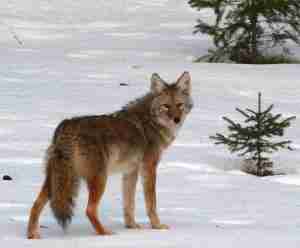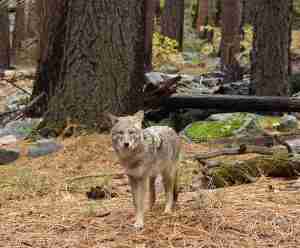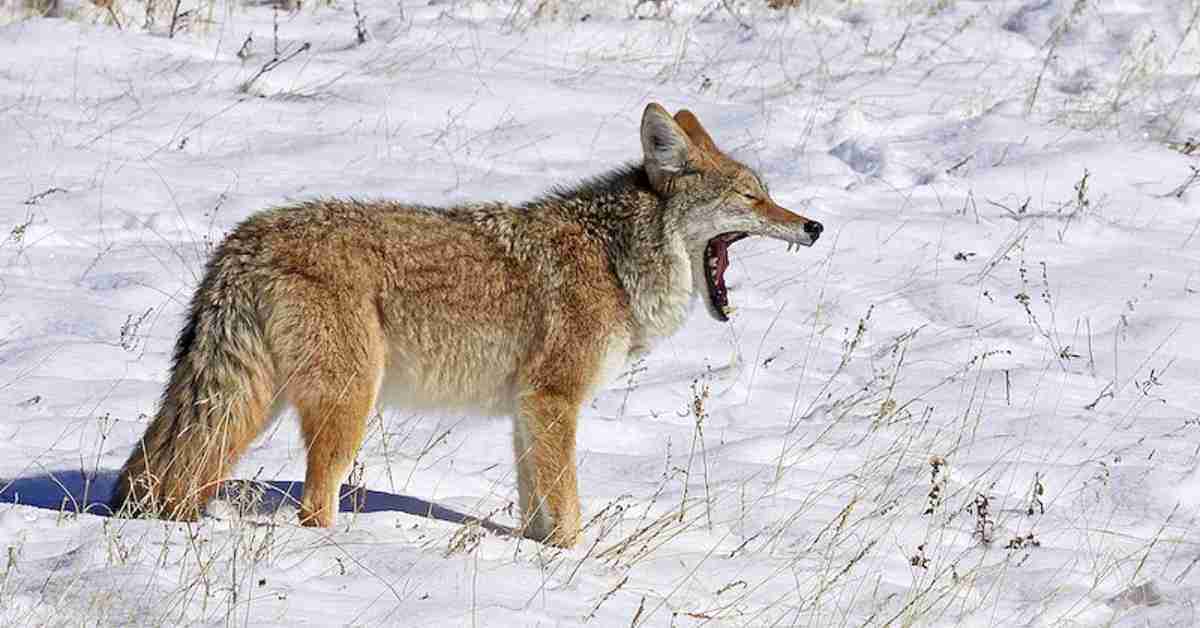Calling coyotes can be an incredibly rewarding experience. If you’re eager to experience hunting these intelligent and cunning creatures, mastering the art of coyote calling is essential.
From understanding their vocalizations to mastering the right equipment and strategies, this comprehensive guide will help you conquer coyote calling for effective hunting.
With the right knowledge and skills, you can use coyote calling to attract and lure coyotes, ensuring you have the best chance for a successful hunt.
Table of Contents
Understanding Coyote Vocalizations
You already know the basics of coyote hunting, but to master the art of calling them, you’ll need to understand their vocalizations – and that’s where the real challenge lies!
Coyotes have a variety of vocalizations, from howls to yips, each with a purpose. Knowing which call to use and how to imitate them accurately is the key to successful hunting. It takes practice and an awareness of the coyotes’ natural behavior to get it right.
With the right knowledge and technique, you can master the art of calling coyotes and reap the rewards of a successful hunt.
Types of Coyote Vocalizations
Whether you’re a seasoned hunter or a novice, learning the different types of coyote vocalizations is essential to mastering the art of calling coyotes.
Howls, barks and yips, whines and growls, each sound has a unique purpose and can be used to your advantage to attract coyotes to the area.
Knowing the differences between these vocalizations, and being able to imitate them accurately, will make you a stronger and more successful hunter.
Howls
Coyotes call out with powerful howls to communicate territorial claims, socialize with pack members, and attract potential mates. Howls vary in pitch, intensity, and duration, sending different messages to other coyotes.
A lone howl might be a territorial declaration, while a group howl could signify social bonding.
Mastering the art of calling coyotes requires understanding their behavior, their natural prey, and the ability to imitate their vocalizations effectively. With practice, you can become an expert in coyote calling, allowing you to enjoy successful hunts and the freedom to explore the wild.
Barks and Yips
Barking and yipping are key sounds coyotes use to signal potential threats or playful interactions, respectively.
They are short and sharp vocalizations that alert others of danger or coordinate hunting strategies. Coyotes use barks as an alarm call, while yips are high-pitched and rapid sounds used to communicate with their pack.
Whines and Growls
You can use whines and growls to communicate with coyotes, convey fear and aggression, and add a layer of realism to your coyote hunting.
Whines are soft, plaintive vocalizations, while growls are low and guttural. Whines are often used to express submission, fear, or appease dominant individuals.
Growls indicate aggression, warning, or territorial defense. Knowing how and when to use these vocalizations will give you an edge in successfully calling coyotes for hunting.
Essential Equipment for Coyote Calling

Mouth-Blown Calls
Experimenting with mouth-blown calls can open up an exciting new world of sound, allowing you to imitate the natural vocalizations of coyotes easily.
From reeds to chambers, these tools offer versatility to call coyotes effectively. Here’s how:
- Use different blowing techniques to create varied sounds
- Manipulate call components for unique coyote calls
- Practice to perfect your craft
- Learn how to adjust your technique for different situations
Electronic Callers
With electronic callers, you can quickly create realistic coyote sounds from a distance and increase your chances of success.
These devices have multiple sound libraries, featuring howls, barks, yips, whines, and growls. You can operate them remotely, enabling you to stay hidden and draw coyotes in closer.
With electronic callers, you can become an expert in coyote calling, fooling even the most experienced predators. The convenience and effectiveness of these devices will help you take your coyote hunting to the next level.
Types of Calls and Their Applications
You may already be familiar with the basics of coyote calling, but you should also understand the different types of calls and their applications for successful hunting.
All three types of calls have their own unique advantages and disadvantages, so it’s important to familiarize yourself with each one.
Locator calls
Try your hand at locator calls and see how quickly you can draw in nearby coyotes! Locator calls mimic howls and other vocalizations to attract coyotes, helping you pinpoint their location.
By understanding coyote behavior and imitating their vocalizations, you can convince them there’s food nearby and draw them in for a successful hunt.
Challenge calls
Take on the thrilling challenge of using challenge calls to draw in coyotes! It’s like playing a game of chess with nature. Here’s what you need to know:
- Learn the different challenge calls to know which to use in various situations.
- Be aware of the coyote’s behaviors and reactions to challenge calls.
- Practice and perfect your challenge-calling technique to get the desired results.
Distress calls
Distress calls can be a powerful tool to draw in coyotes, as they can trigger the predator’s hunting instinct. They replicate the sounds of injured prey animals, like rabbits or rodents, creating a sense of urgency to convince coyotes that an easy meal is nearby.
Mastering this art requires understanding the coyote’s behavior and the ability to imitate their vocalizations effectively. When done correctly, it can successfully lure coyotes within range for a successful hunt.
Strategies for Effective Coyote Calling

File:Coyote_in_forest.jpg
Scout your hunting area
Before you embark on your coyote hunting adventure, it’s important to explore the area with the same intensity that a detective looks for clues – scouring the land for signs of recent coyote activity like a hawk hunting for prey.
Get to know the terrain, by looking for the following:
- Potential hiding spots
- Suitable vantage points
- Areas with high coyote activity
You’ll also want to look for tracks, droppings, and fresh kills. With an understanding of the landscape and coyote behavior, you can increase your chances of a successful hunt.
Proper concealment
To effectively conceal yourself while coyote hunting, blend into your surroundings and keep still. Wear camouflage that matches the environment, pay attention to your silhouette, and use blinds to break up your outline.
Minimize noise, and remain motionless to avoid detection. Coyotes have keen senses, so follow these simple tips to ensure a successful hunt.
Wind direction and scent control
Now that you have the proper concealment, it’s time to focus on wind direction and scent control. To maximize success, remember:
- Position yourself so the wind is blowing from the coyotes towards you.
- Use scent-eliminating sprays or cover scents to reduce human odor.
- Always pay attention to the wind direction.
With these tips, you’ll be able to master the art of coyote calling.
Call sequence and timing
Getting the timing and sequence of your calls right can make a huge difference in your coyote hunting success. Start with locator calls to grab their attention, then switch to challenge calls to provoke a response and distress calls to simulate wounded prey.
Vary the length and intensity of your calls, incorporating pauses to mimic natural coyote vocalizations. Experiment with different sequences and observe their response to optimize your calling strategies.
Conclusion
Putting it all together, becoming an expert at calling coyotes is like solving a puzzle. You need each piece to fit just right to succeed.
So keep practicing your vocalizations, choose the right call for the situation, and refine your strategies. Soon enough, you’ll be calling coyotes like a pro!
- Gun Ranges For Beginners - January 25, 2024
- How To Build Indoor Gun Range: Your Ultimate Blueprint - January 25, 2024
- How To Find the Cheap Shooting Range Near Me? - January 25, 2024

